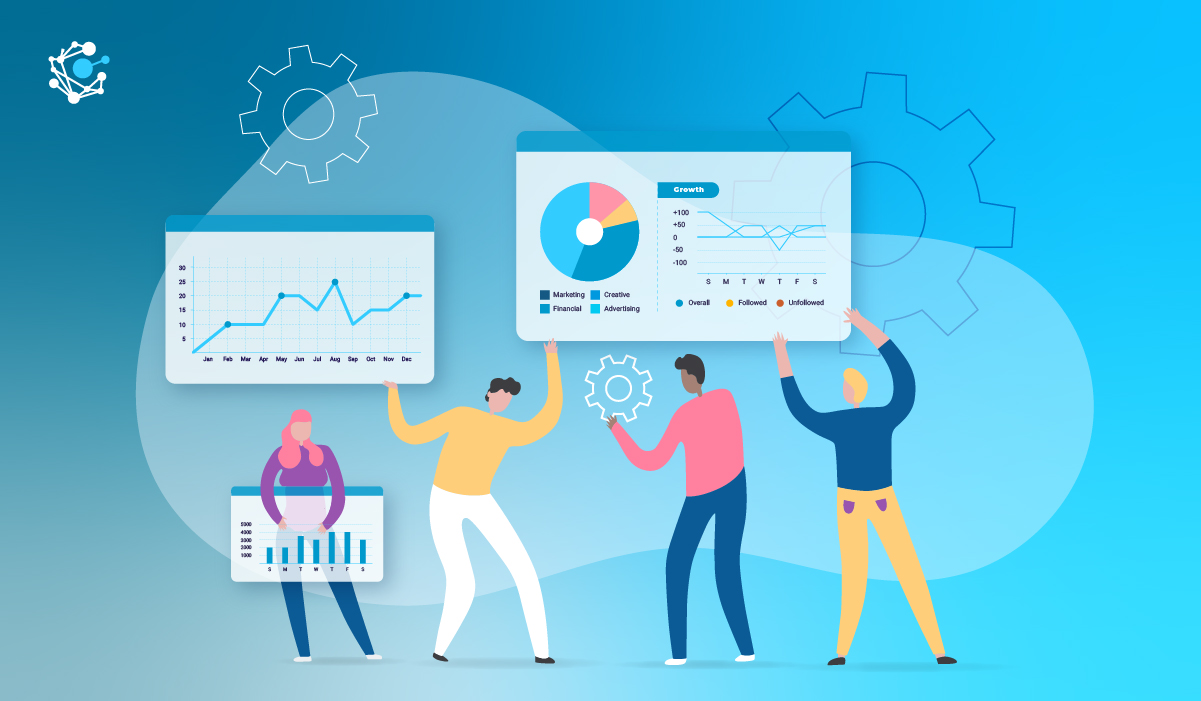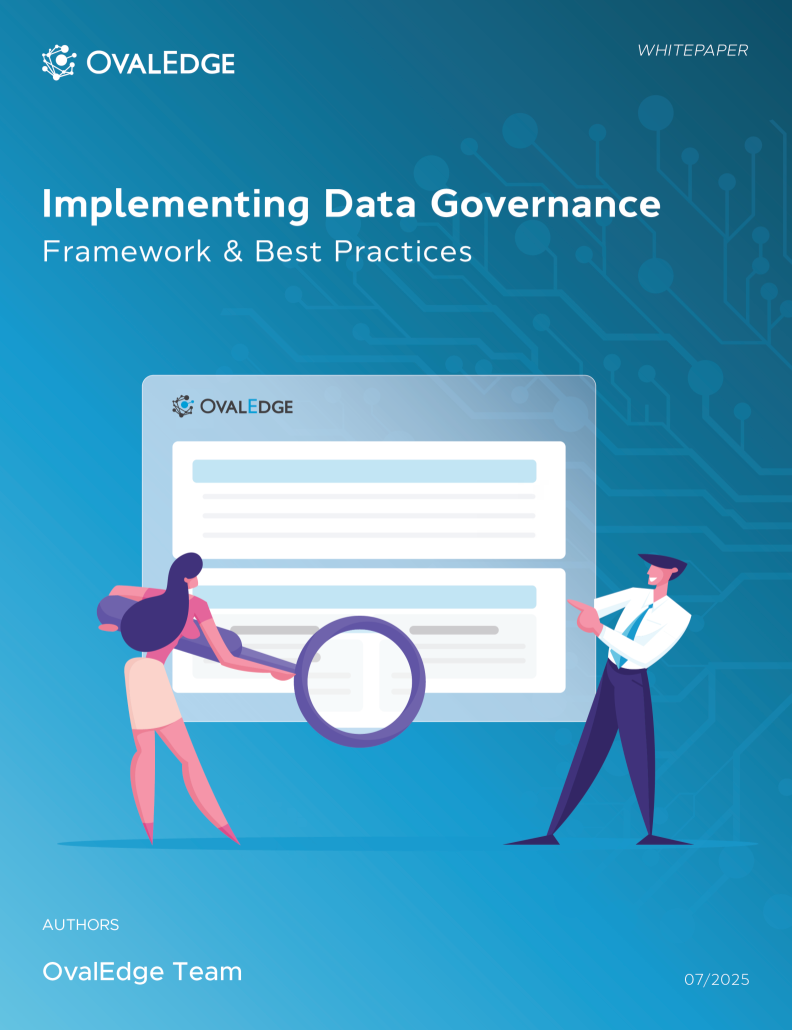Table of Contents
How Cross-Team Collaborative Analytics Benefits an Organization
Over the last decade, analytics has evolved from simple reporting dashboards into powerful, organization-wide intelligence engines.
Today, companies aren’t just tracking call insights or productivity; they're analyzing how teams work together and using those insights to drive better decisions, faster growth, and smarter collaboration.
With work devices increasingly connected to a centralized system, leaders can now understand performance at every layer: individual employees, team structures, and cross-department workflows.
And thanks to modern collaboration analytics software, this level of visibility is accessible to everyone, not just data teams.
Platforms like Sigma, Cisco, and Tollring have made collaborative intelligence more intuitive than ever. Their tools surface call quality insights, productivity patterns, and engagement trends inside clean, user-friendly dashboards.
The result? Anyone in an organization, sales, marketing, operations, or HR can use data to make smarter decisions.
Maryville University’s deep dive into their online master’s program in business data analytics discusses a boom in the industry, which has led to a 13.2% compound annual growth rate in the field.
Global big data revenue was projected to reach $349.2 billion by 2023 (Statista), and the annual volume of data created is expected to exceed 180 trillion gigabytes by 2025.
This explosion of data is exactly what fuels modern collaborative analytics platforms, enabling organizations to uncover patterns that were invisible a few years ago.

What Are the Benefits of Collaborative Analytics?
There are various ways to demonstrate the benefits of collaborative analytics, but they fall under two distinct categories: business and individual.
Both the business as a whole and individual employees can improve and grow based on interactions with company data using the analytics tools at their disposal.
Collaborative analytics delivers value across the entire organization. These advantages generally fall into two categories: business-level benefits and individual-level benefits.
1. Business-Level Benefits
Modern tools make it easy to combine insights from multiple teams, resulting in faster and more accurate decision-making.
Key benefits include:
- Stronger decision-making
A CGMA study found that 46% of executives struggle with decision-making due to a lack of quality data. Collaborative analytics solves this by ensuring leaders work with the right metrics, not gut instinct.
- Faster decisions
When leadership teams share insights through a centralized system, decisions move quickly because everyone is aligned on the same data.
- Higher productivity
Analytics uncover bottlenecks in workflows, allowing teams to fix inefficiencies and boost output.
- Better innovation
When all teams from product to sales to support share insights openly, breakthrough ideas tend to emerge faster.
Together, these collaborative analytics benefits directly improve revenue, operational efficiency, and overall organizational agility.
Usage statistics show, subsequently, that working with thecorrect metrics and information tools can significantly speed up the decision-making process and even lead to better quality decisions.
When the best resources are provided to leadership teams, companies can better foster innovation and improve productivity. With higher rates of productivity, the bottom line naturally increases as revenue streams improve.
When it comes to individual employee growth, collaborative business intelligence opens up the possibility for more KPIs that can be measured and rewarded accordingly.
Collaborative analytics is an effective way to spread knowledge across an organization. Barriers in deliberation, communication, and creativity are rooted out and dealt with more easily when modern platforms for collaborative analytics are properly deployed.
The Growth of Analytics Tools and Techniques
With remote work rapidly expanding, analytics capabilities are evolving just as quickly.
A few major trends stand out:
1. Cloud-based collaboration is the new default
Most companies operate on cloud systems, making collaboration analytics software easy to deploy and scale.
2. Leadership roles have shifted
A solid example can be seen in the major Fortune 500 players adopting solutions to leverage digital solutions and new leadership structures, hot on the heels of sizable growth.
In 2018, the majority of global organizations had already employed a Chief Data Officer. By 2018, most Fortune 500 companies had appointed a Chief Data Officer (Forbes). Since then, data-driven leadership has strengthened even further.
3. Small businesses now have access to powerful tools
Platforms like Knarr and others offer accessible and affordable solutions for startups and smaller teams, democratizing analytics.
4. New leadership models rely heavily on real-time data
Organizations moving toward agile, hybrid, or remote teams increasingly depend on collaborative analytics to stay aligned.
5. AI and automation have accelerated adoption
Modern collaborative analytics platforms incorporate automated insights, predictive analytics, and integrated communication tools, making cross-team collaboration effortless.
Forbes even reported a surge in business intelligence penetration for small organizations in the year prior.
In a post-pandemic world, organizations need frictionless collaboration more than ever, and analytics is becoming the backbone of that shift.
How Collaborative Analytics Strengthens Team Alignment
One of the biggest challenges organizations face is misalignment between teams. Marketing may optimize one set of KPIs, while sales focuses on another. The product might prioritize feature velocity, while customer success wants stability.
Collaborative analytics fixes this by putting everyone on the same page.
Teams can now:
- Spot workflow gaps faster
- Share insights across functions
- Identify recurring patterns
- Resolve conflicts rooted in misunderstanding or lack of visibility
- Build unified strategies backed by verified data
This creates a more transparent and cohesive work environment.
FAQs
1. What is collaborative analytics?
Collaborative analytics is the practice of combining data and insights from multiple teams to make better decisions. It allows employees across departments to work with shared dashboards, reports, and metrics.
2. How does collaboration analytics software work?
It centralizes data from different sources and presents it through user-friendly dashboards, enabling teams to track performance, share insights, and collaborate in real time.
3. What are the main collaborative analytics benefits?
Faster decision-making, improved productivity, better communication, stronger alignment across teams, and clearer visibility into business performance.
4. Who uses collaborative analytics platforms?
Sales teams, marketing teams, customer support, operations, HR, product managers, and leadership executives.
5. What’s the difference between business intelligence and collaborative analytics?
Business intelligence focuses on reporting and analysis. Collaborative analytics goes further by enabling cross-team interaction and shared decision-making.
6. Can small businesses use collaborative analytics?
Yes. Many modern tools are cost-effective and built specifically for startups and smaller organizations.
7. Which industries benefit most from collaborative analytics?
Technology, telecom, finance, retail, healthcare, and any sector with cross-functional teams.
8. How do collaborative analytics platforms support remote teams?
They provide shared dashboards, unified communication features, and real-time data transparency, ensuring teams stay aligned even while distributed.
|
What you should do now
|
OvalEdge recognized as a leader in data governance solutions
.png?width=1081&height=173&name=Forrester%201%20(1).png)
“Reference customers have repeatedly mentioned the great customer service they receive along with the support for their custom requirements, facilitating time to value. OvalEdge fits well with organizations prioritizing business user empowerment within their data governance strategy.”
.png?width=1081&height=241&name=KC%20-%20Logo%201%20(1).png)
“Reference customers have repeatedly mentioned the great customer service they receive along with the support for their custom requirements, facilitating time to value. OvalEdge fits well with organizations prioritizing business user empowerment within their data governance strategy.”
Gartner, Magic Quadrant for Data and Analytics Governance Platforms, January 2025
Gartner does not endorse any vendor, product or service depicted in its research publications, and does not advise technology users to select only those vendors with the highest ratings or other designation. Gartner research publications consist of the opinions of Gartner’s research organization and should not be construed as statements of fact. Gartner disclaims all warranties, expressed or implied, with respect to this research, including any warranties of merchantability or fitness for a particular purpose.
GARTNER and MAGIC QUADRANT are registered trademarks of Gartner, Inc. and/or its affiliates in the U.S. and internationally and are used herein with permission. All rights reserved.



.webp)


